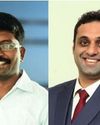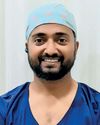In the world of cybersecurity, ‘prevent to protect’ is considered the most important maxim

The now infamous WannaCry attack infected more than 2,00,000 businesses across the globe a year ago. One of the most prominent victims was the National Health Service (NHS) of the United Kingdom. In just moments, the attack took 45 NHS hospital groups offline and hindered about 20,000 appointments. Although no fatalities were reported, the largest ransomware attack in history was a clear signal that healthcare industry may not be prepared for increasingly advanced cyberattacks.
In the world of cybersecurity, ‘prevent to protect’ is considered the most important maxim. We have to analyse the attackers’ Tactics, Techniques, and Procedures (TTPs) and pre-empt attack vectors or those vulnerabilities could potentially be used to compromise a system or a network. Despite our increased awareness of network security, cyberattackers have time and again come up with new and more evolved tactics to counter the cybersecurity establishments. The Hitachi Payment Services hack, for instance, which subsequently affected about 32 lakh debit cards in India, used a malicious code that concealed its traces after every successive exploit. This made the code virtually undetectable.
Imagine an attack like spreading from hospital to hospital. The results could be deadly.
Vulnerability of Healthcare Systems
Denne historien er fra July 2018-utgaven av Healthcare Radius.
Start din 7-dagers gratis prøveperiode på Magzter GOLD for å få tilgang til tusenvis av utvalgte premiumhistorier og 9000+ magasiner og aviser.
Allerede abonnent ? Logg på
Denne historien er fra July 2018-utgaven av Healthcare Radius.
Start din 7-dagers gratis prøveperiode på Magzter GOLD for å få tilgang til tusenvis av utvalgte premiumhistorier og 9000+ magasiner og aviser.
Allerede abonnent? Logg på

SpOvum launches Al-powered platform to boost patient support in assisted reproductive technology
The platform offers personalized information based on individual ART-related concerns, drawing from reliable, indexed medical guides to provide fact-based, tailored answers.

Hearzap launches Al-powered Philips HearLink 50 miniRITE
The company is projected to expand across 250 stores by 2026 and envisions accessible and affordable hearing care across the country.

Red.Health launches Al-driven medical emergency platform
In medical emergencies, every second matters but the current emergency medical systems face many challenges

OmniActive acquires ENovate Biolife
The company aims to double its top line, targeting Rs 2,000 crores within the next 5 to 6 years from the present Rs 1,000 crores.

5-year-old fish bone removed from 61-year-old's abdomen
The patient had previously undergone an endoscopic procedure five years ago at another hospital to remove a fishbone, but the current one had likely been missed at that time.

Large brain aneurysm treated using advanced stenting method
Aneurysm is a bulge or ballooning in a blood vessel of the brain. It’s often described as looking like a berry hanging on a stem.

37-year-old pregnant woman treated for aggressive breast cancer
Given the complexity of her condition, the team worked closely to develop a treatment plan that would balance the needs of both mother and babies.

45-year-old treated with robotic-assisted hernia surgery
This surgery marks a significant milestone for Park Hospital, which has successfully completed 50 robotic-assisted procedures.

Healthium Medtech, Healthcare Sector Skill Council (HSSC) sign MoU to boost skill development in Indian healthcare
Healthium and HSSC will collaborate to deliver training programs aimed at skilling, reskilling and upskilling healthcare workers, enabling them to address evolving challenges in the field.

Advanced ambulance fleet launched for Maharashtra's emergency services
The announcement comes amid ongoing bilateral meetings between Prime Minister Narendra Modi and Prime Minister Pedro Sanchéz Perez Castejon of Spain.